Dilophosaurus wetherilli
A comprehensive anatomical and phylogenetic evaluation of Dilophosaurus wetherilli (Dinosauria: Theropoda) with descriptions of new specimens from the Kayenta Formation of northern Arizona
This research paper was published Open Access on 7/7/2020 in the Journal of Paleontology
Press release from the Jackson School of Geosciences available here
Adam Marsh & Timothy Rowe
Abstract.—Dilophosaurus wetherilli was the largest animal known to have lived on land in North America during the Early Jurassic. Despite its charismatic presence in pop culture and dinosaurian phylogenetic analyses, major aspects of the skeletal anatomy, taxonomy, ontogeny, and evolutionary relationships of this dinosaur remain unknown. Skeletons of this species were collected from the middle and lower part of the Kayenta Formation in the Navajo Nation in northern Arizona. Redescription of the holotype, referred, and previously undescribed specimens of Dilophosaurus wetherilli supports the existence of a single species of crested, large-bodied theropod in the Kayenta Formation. The parasagittal nasolacrimal crests are uniquely constructed by a small ridge on the nasal process of the premaxilla, dorsoventrally-expanded nasal, and tall lacrimal that includes a posterior process behind the eye. The cervical vertebrae exhibit serial variation within the posterior centrodiapophyseal lamina, which bifurcates and reunites down the neck. Iterative specimen-based phylogenetic analyses result in each of the additional specimens recovered as the sister taxon to the holotype. When all five specimens are included in an analysis, they form a monophyletic group that supports the monotypy of the genus. Dilophosaurus wetherilli is not recovered as a ceratosaur or coelophysoid but is instead a non-averostran neotheropod in a grade with other stem-averostrans like Cryolophosaurus ellioti and Zupaysaurus rougieri. We do not recover a monophyletic ‘Dilophosauridae.’ Instead of being apomorphic for a small clade of early theropods, it is more likely that elaboration of the nasals and lacrimals of stem-averostrans is plesiomorphically present in early ceratosaurs and tetanurans that share those features. Many characters of the axial skeleton of Dilophosaurus wetherilli are derived compared to Late Triassic theropods and may be associated with macropredation and an increase in body size in Theropoda through the Triassic-Jurassic boundary.
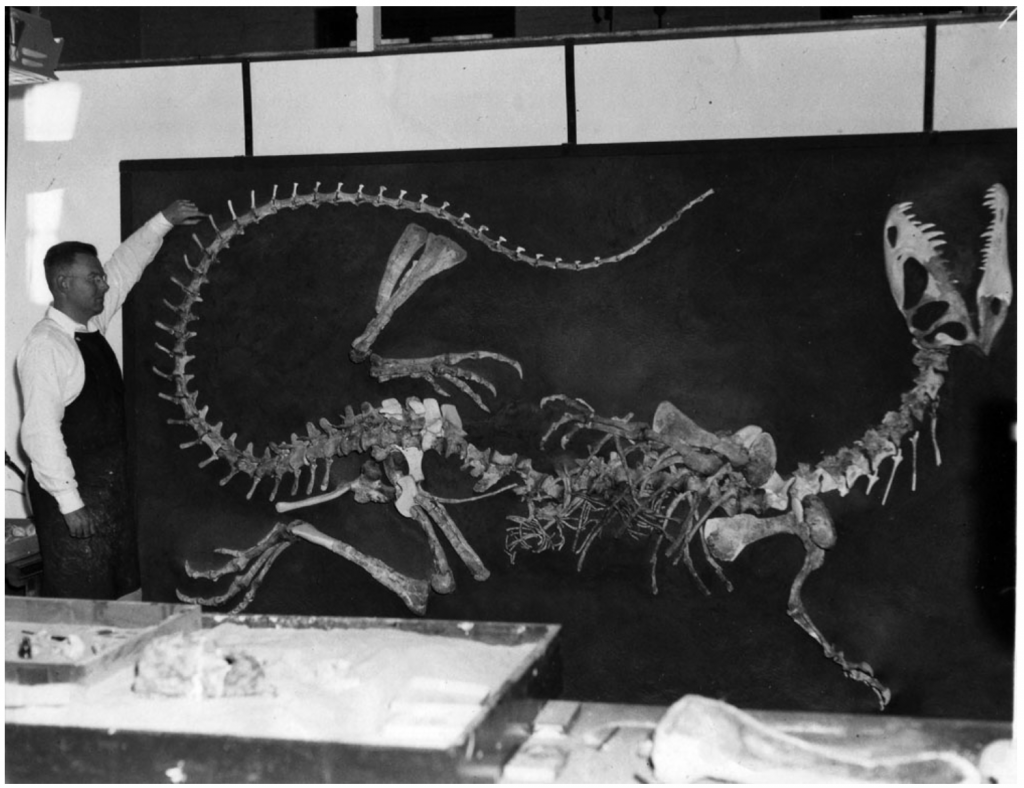
Dr. Wann Langston posing with the skeleton of Dilophosaurus wetherilli in the early 1950s. Langston supervised the reconstruction of this specimen while completing his doctoral studies at the University of California, Berkeley. Photo courtesy Texas Vertebrate Paleontology Collections.
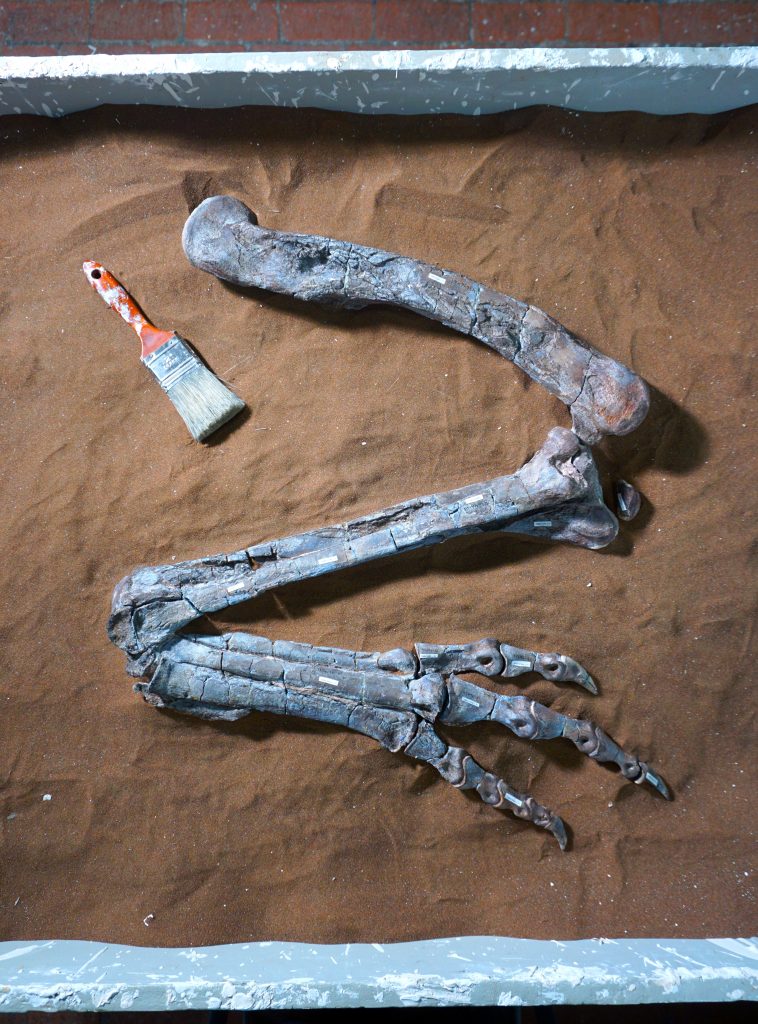
The right hind leg of Dilophosaurus wetherilli, collected under permit from the Navajo Nation, and housed in trust at the Texas Vertebrate Paleontology Collections. Photo Credit: Matthew Brown.
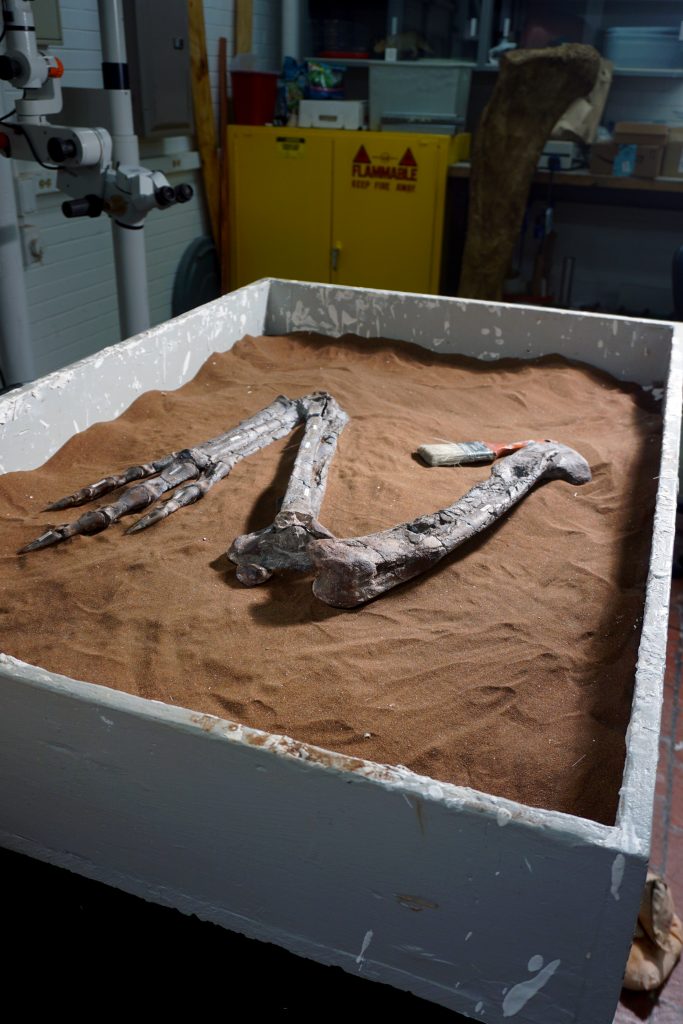
The right hind leg of Dilophosaurus wetherilli, collected under permit from the Navajo Nation, and housed in trust at the Texas Vertebrate Paleontology Collections. Photo Credit: Matthew Brown.
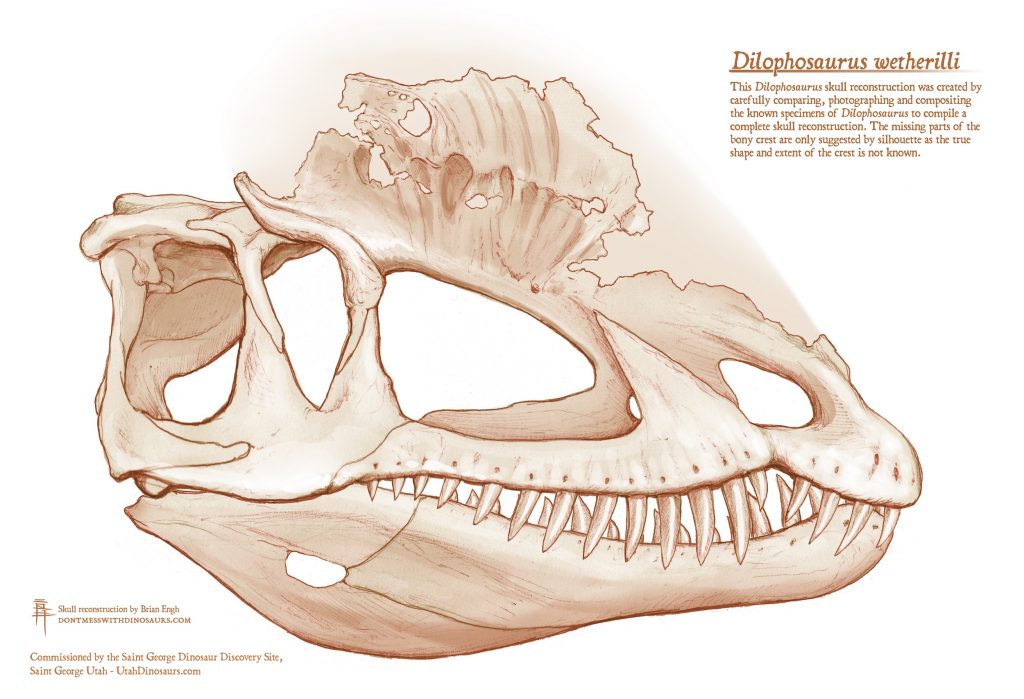
Image Credit: Dilophosaurus reconstruction by Brian Engh – dontmesswithdinosaurs.com, commissioned by The Saint George Dinosaur Discovery Site
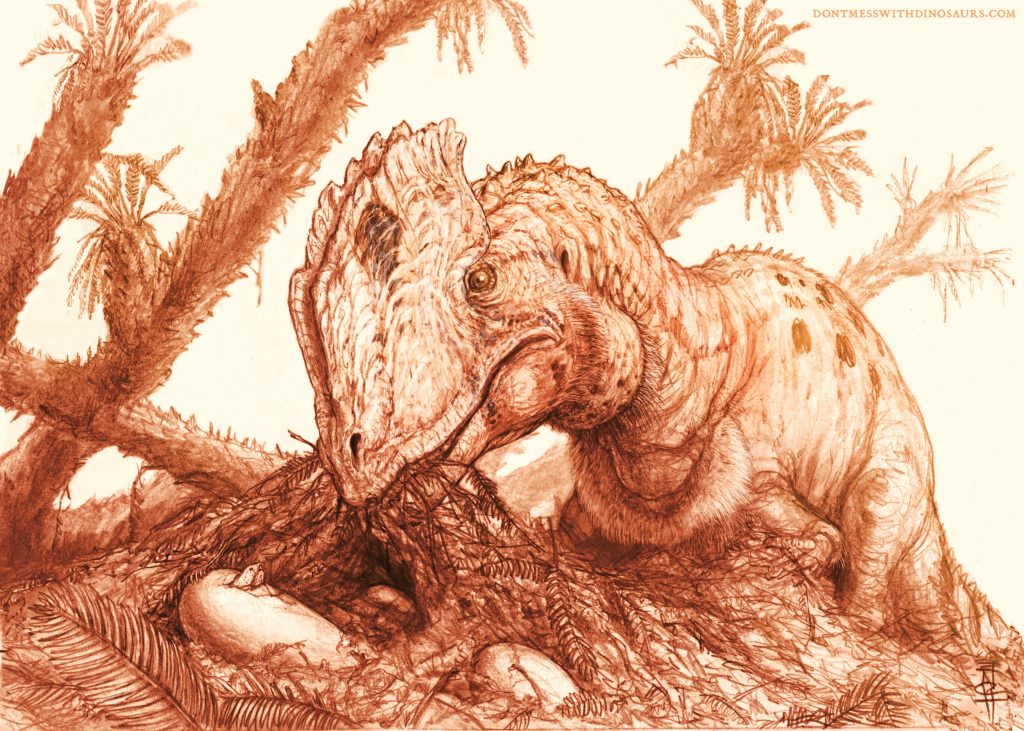
Image Credit: Dilophosaurus reconstruction by Brian Engh – dontmesswithdinosaurs.com, commissioned by The Saint George Dinosaur Discovery Site
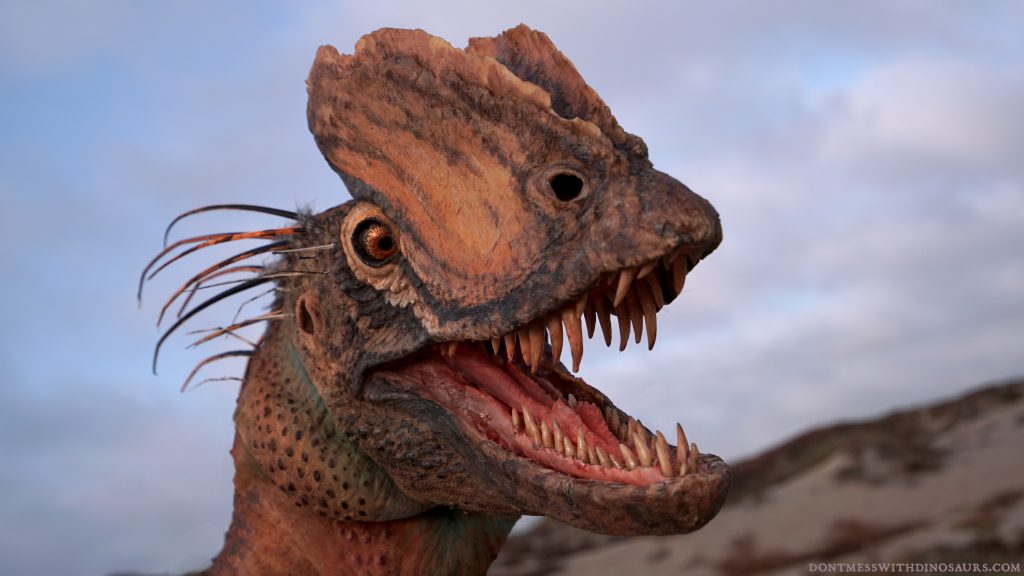
Credit- Dilophosaurus puppet by Brian Engh – dontmesswithdinosaurs.com, commissioned by The Saint George Dinosaur Discovery Site
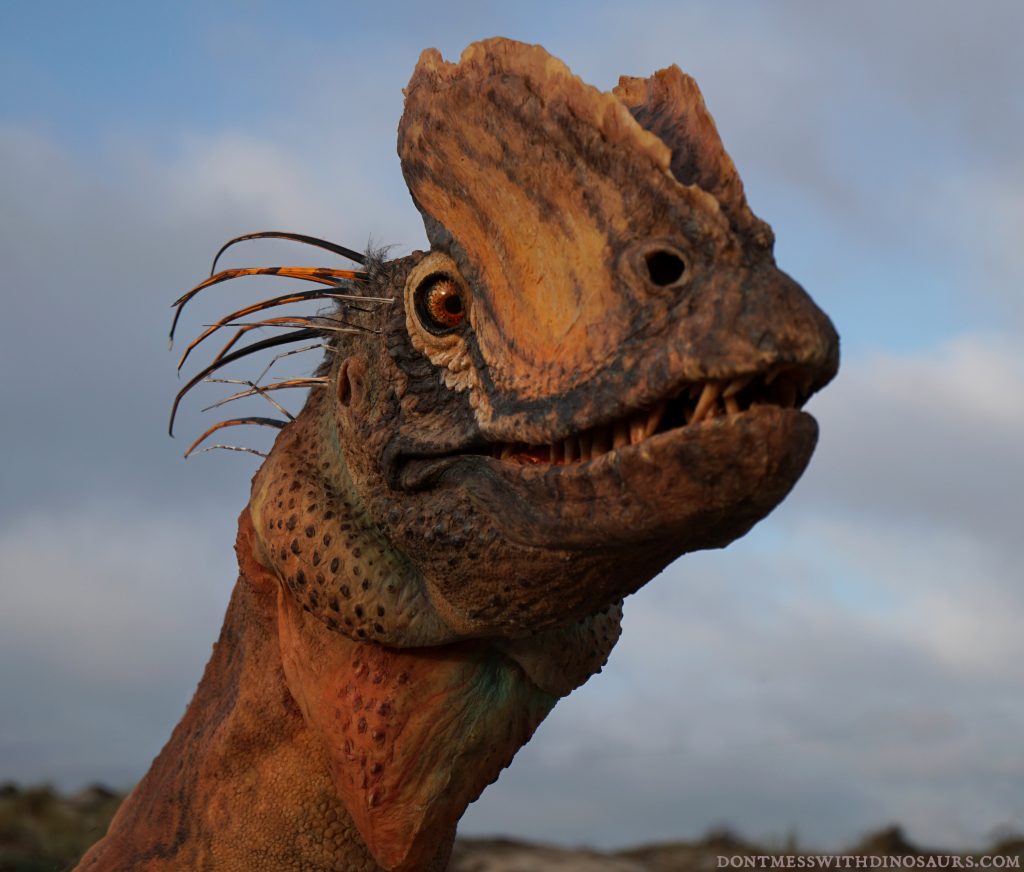
Credit- Dilophosaurus puppet by Brian Engh – dontmesswithdinosaurs.com, commissioned by The Saint George Dinosaur Discovery Site
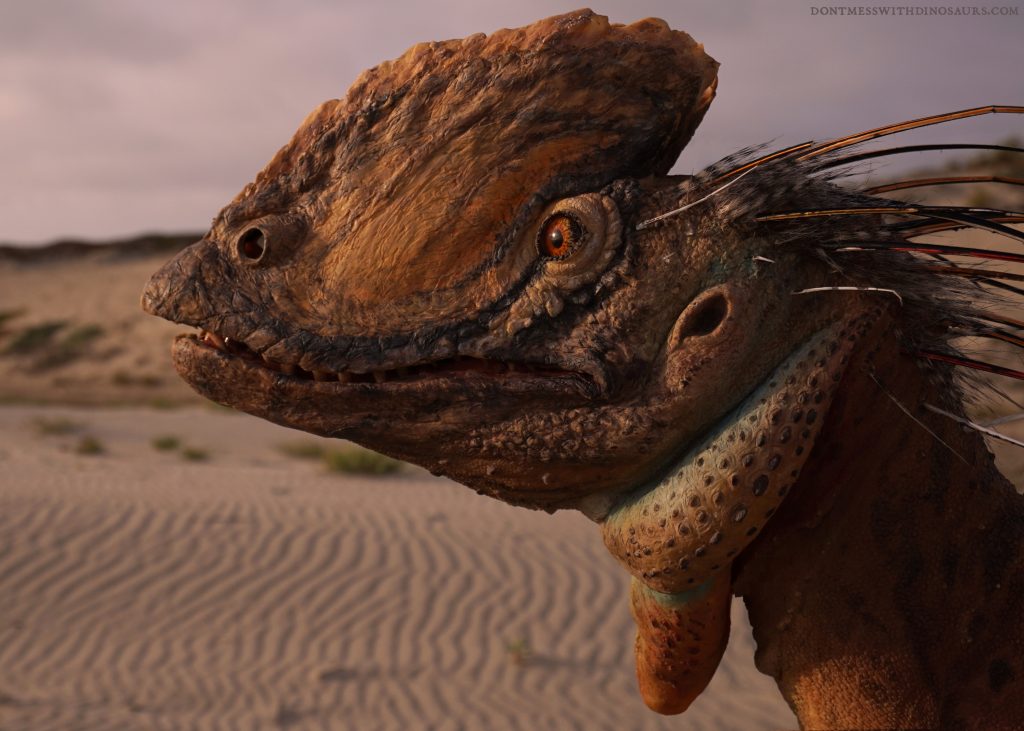
Credit- Dilophosaurus puppet by Brian Engh – dontmesswithdinosaurs.com, commissioned by The Saint George Dinosaur Discovery Site

